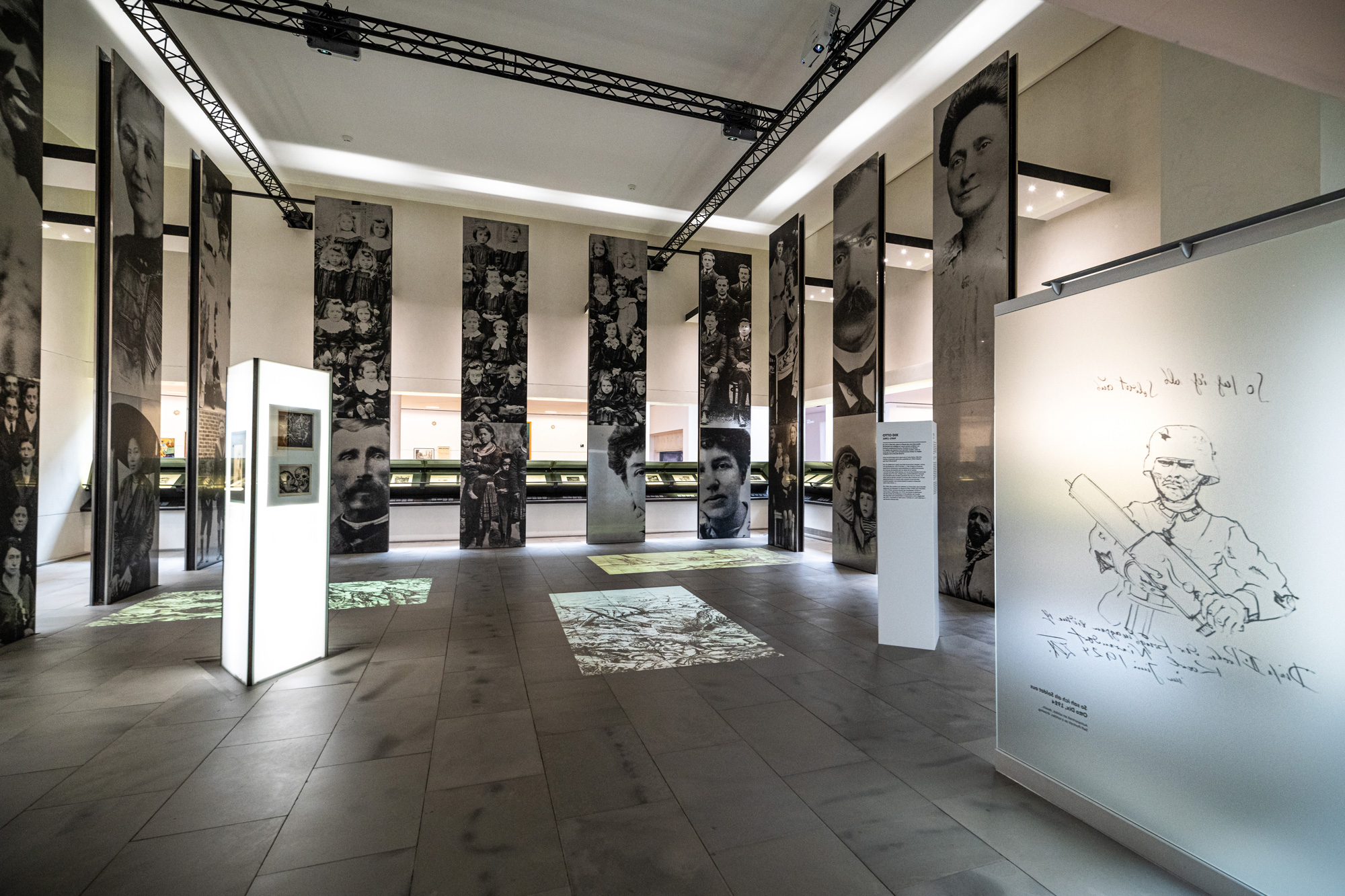Otto Dix
In 1914, Otto Dix, then a 24-year-old Fine Arts student in Düsseldorf, signed up and was sent to the Western Front. A master of German Expressionism, between 1920 and 1924 Dix, under the influence of Grosz, produced a work which eloquently expresses his anti-militarism and disgust with war, imbued with both pathos and vivid violence.
Thanks to this acquisition, the Historial of the Great War is now the only museum in the world to be able to present Der Krieg in its entirety (The 51st etching is kept in a drawer in the chest of drawers in the Otto Dix Room)

Der Krieg
Der Krieg is an extraordinary testimony to the tragic realities of the Great War, seen from the German side with no enemies in sight. Otto Dix wanted to show the suffering, injury and death that afflicted his comrades, at a time when the rise of the Nazi party was increasing the risk of another major conflict.
The cycle is inspired by Goya’s Disasters of War series, and evokes the difficulty of forgetting the horrors endured in wartime: “the fact is that, as a young man, you don’t realise how profoundly you have been marked by it all. For at least ten years I used to dream about crawling through ruined houses, (seriously), through corridors so narrow I could barely get through. My dreams were always full of ruins…”
These etchings explores a variety of macabre themes, forming an abominable chronicle of combat. Destruction, damage and mutilated bodies are shown in murky chiaroscuro, creating an apocalyptic atmosphere. Many of these scenes of death and desolation are set in the Somme or elsewhere in Picardy, where Otto Dix served.
Otto Dix shows no indulgence towards the soldiers he depicts, his former comrades-in-arms. Far from celebrating acts of heroism, he emphasises the destructive savagery of war. The artist devoted much of his career to bearing witness to the deleterious effects of war on people, nature and our shared heritage. In 1933 the Nazis removed Dix from his teaching position at the Academy in Dresden. His works were included in the infamous exhibition of “degenerate art”(Entartete Kunst), and much of his oeuvre was destroyed. Otto Dix moved first to Hegau, in Baden-Württemberg, and later to Hemmenhofen on the banks of Lake Constance in 1936, where he turned his attentions to religious themes.
To find out more:
– Catalogue published by Gallimard: Der Krieg
This magnificent volume, produced by the Historial of the Great War and published by Gallimard, contains reproductions of all 50 etchings along with commentary on each.
Available to buy from the Historial book shop at Péronne! Retail price : 24 Euros
Cahier de l’Historial n°4 “Otto Dix, les morsures de la guerre” Pamphlet (in French )
available from the book shop for €2
– History of Art/Otto Dix / SE:

